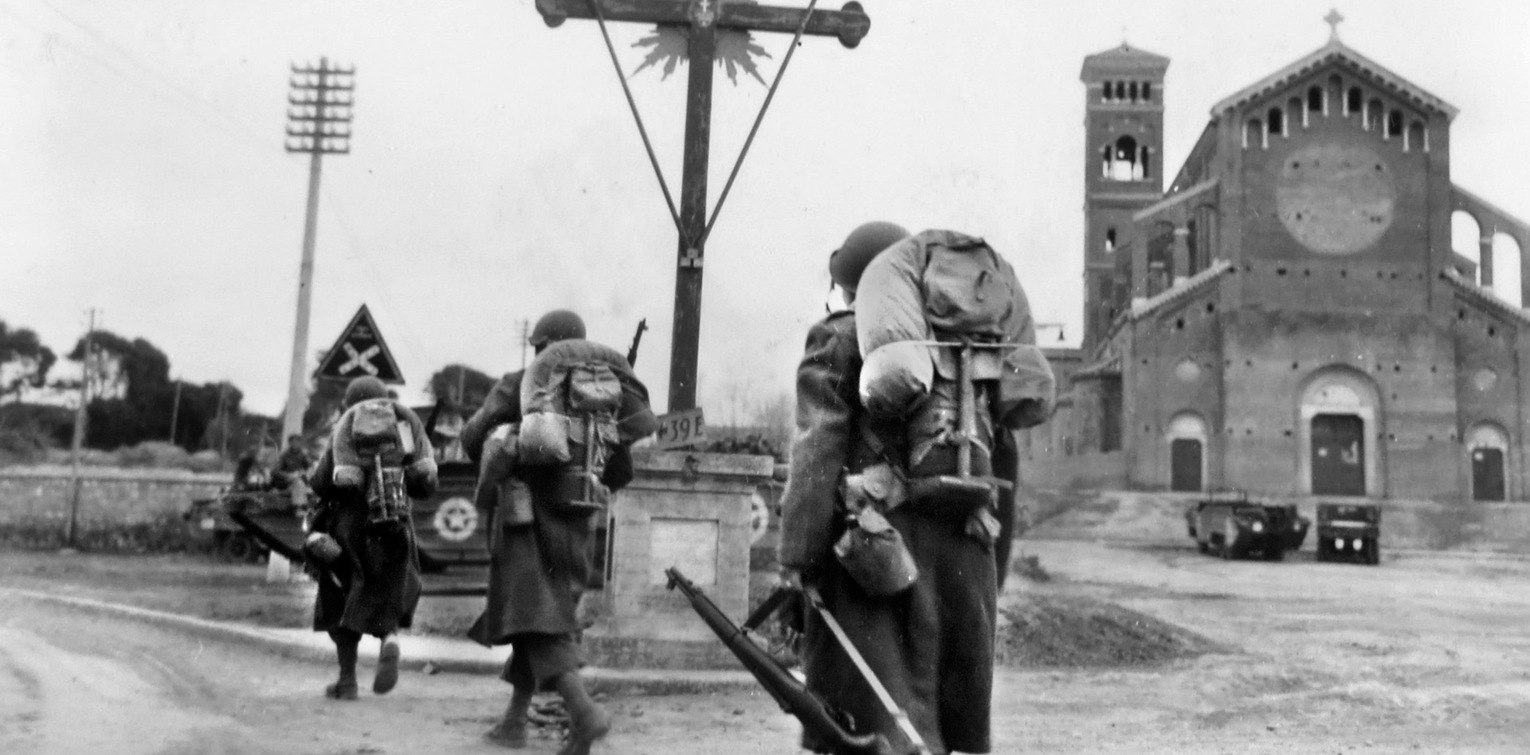
45th Infantry Division
Thunderbirds at the Gates of Rome
The 45th Infantry Division and the Battle of Anzio
A Journey Through Fire, Memory, and the Duty to Remember
Who Were the Thunderbirds?
The 45th Infantry Division, known as the "Thunderbirds", was formed by National Guardsmen from Oklahoma, New Mexico, Colorado, and Arizona — a proud mix of American cultures and Native American heritage. Its insignia, a golden thunderbird, symbolized power and protection.
During World War II, the division fought in:
-
Sicily (July 1943)
-
Salerno (September 1943)
-
Anzio (January–May 1944)
-
Southern France (August 1944)
-
Germany, including the liberation of Dachau (1945)
The Anzio Campaign
In the final days of January 1944, the 45th landed at Anzio as part of the second wave of Operation Shingle. Although they did not land on the first day (January 22), they quickly became a core force in the defense and eventual breakout from the beachhead.
From February to May, they held defensive lines under relentless German artillery, raids, and sniper fire. In May 1944, the division participated in the Allied breakout, advancing through:
-
Aprilia (known to troops as "The Factory")
-
Campoleone (strategic rail junction)
-
Albano and Genzano (gateway to the Alban Hills)
On June 4, 1944, Allied forces entered Rome — the first Axis capital to fall — thanks in large part to the Thunderbirds' perseverance.
Losses and Legacy
-
Anzio casualties: approx. 6,500 (over 1,200 killed)
-
Total WWII casualties: over 21,000
-
Decorations: 8 campaign stars, 4 Medals of Honor
The Thunderbirds earned a reputation for courage, sacrifice, and honor. Their legacy lives in the towns they liberated — and in the graves they now rest in.
In Their Footsteps: A Pilgrimage Before Nettuno
Sites to Visit Before the Sicily–Rome American Cemetery
To fully honor the Thunderbirds, one can walk the ground where they fought and fell. Below is a suggested route that traces their journey — from battlefield to final rest.
1. Piana delle Orme Museum – Historical Context
Start at this immersive WWII museum near Latina to understand the broader Italian campaign. Exhibits include reconstructions of the Anzio landings and life on the beachhead.
2. Campoleone – Breaking the German Line
-
What happened here: In late May 1944, the 45th stormed Campoleone under heavy German resistance.
-
Who fell here:
-
Pfc. Allen Tupper Brown, 157th Infantry Regiment – Killed May 29, 1944. Stepson of General George C. Marshall.
-
-
What to visit: Campoleone rail station and surrounding streets where urban combat took place.
3. Albano & Genzano – The Push into the Alban Hills
-
The division continued its assault through Albano Laziale and Genzano di Roma, ancient towns fiercely defended by retreating German forces.
-
These towns mark the final climb before reaching Rome.
4. Aprilia Overpass ("The Factory") – Where the Line Was Drawn
-
Nicknamed “The Factory” by Allied troops due to its ruined industrial buildings.
-
Here, the 45th fought bitterly to push beyond the fortified German belt.
5. Anzio Harbor and Beachhead Ridges – Where It Began
-
The Thunderbirds landed east of Anzio under artillery threat.
-
Who fell here:
-
Pfc. John G. Raad, 180th Infantry Regiment – Killed March 22, 1944, while defending the perimeter.
-
6. Sicily–Rome American Cemetery – Final Tribute
-
Located in Nettuno, the cemetery holds 7,800+ graves.
-
Dozens of them belong to men from the 157th, 179th, and 180th Regiments of the 45th Division.
-
Recommended: Use the grave locator kiosk; visit the Memorial Chapel and Walls of the Missing.
Why It Matters
The Thunderbirds didn’t fight for conquest, but for liberation.
They crossed oceans and mountains, endured mud, blood, and silence — and gave everything.
To walk where they fought is to carry their story forward.
To visit where they rest is to honor their promise.
They brought freedom. We must bring remembrance.
